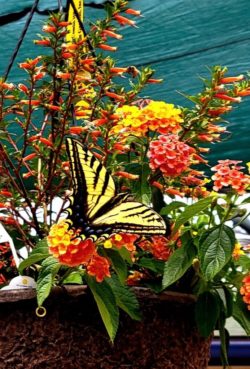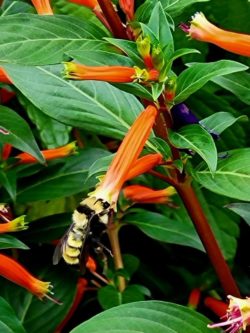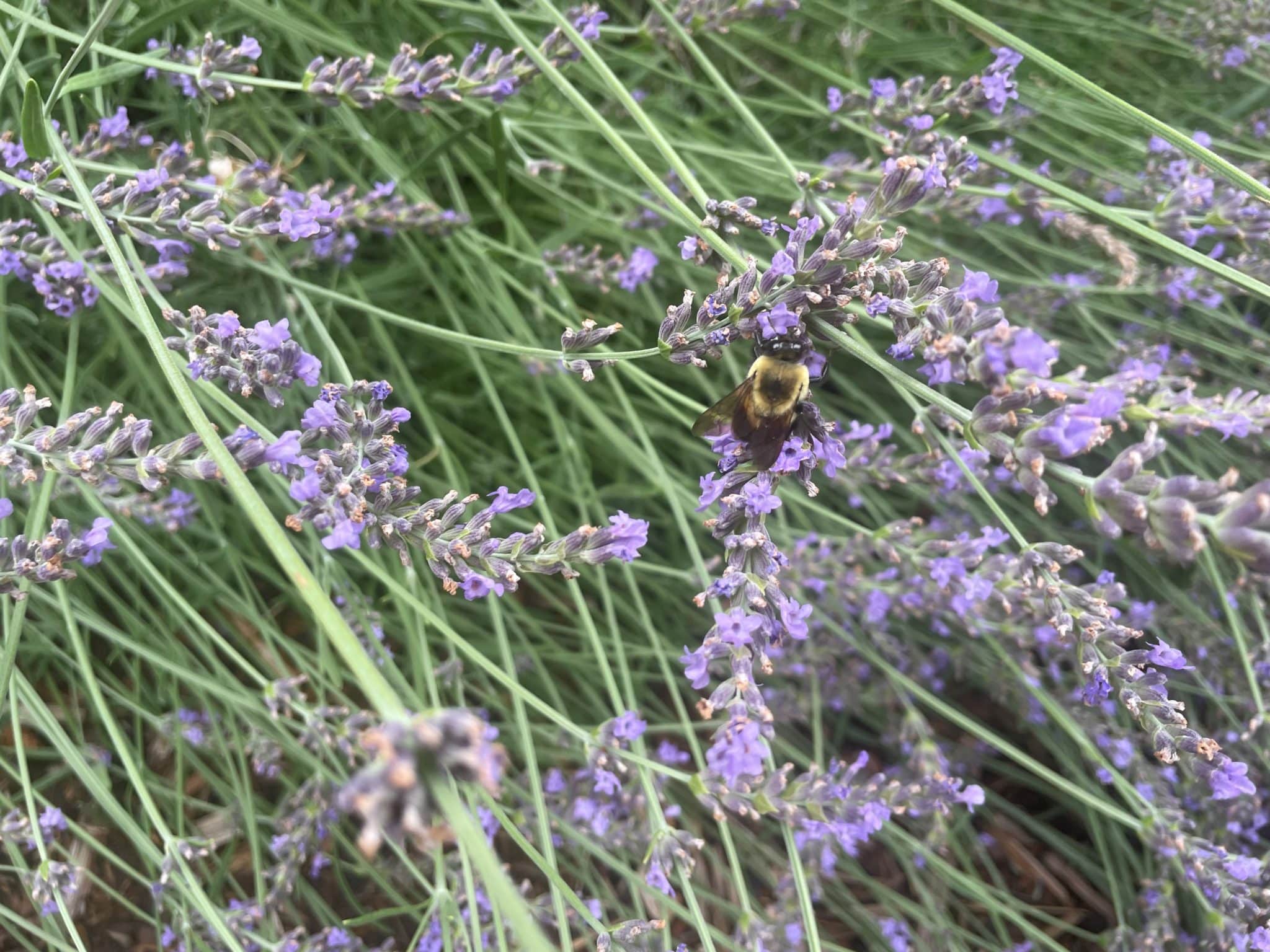While planning your garden, consider adding native plants and more diversity to make your yard a haven for pollinators and wildlife. As agriculture has intensified and our populations have grown, a lot of habitat has been lost, so even a pot of flowers on the front porch can make a big difference by supporting hundreds of pollinators.
Landscape Considerations
Observe your yard for sun patterns and any unique micro-climate situations. Use your observation information as you consider how to provide for pollinators. Remember in any landscape design, there are typically three layers of vegetation that we enjoy visually, and that nature will take advantage of. Trees offer nesting, shelter, shade and food. Shrubs offer protection and food. Perennials fill-in the landscape with beautiful flowers that will attract pollinators.
Flowers for Pollinators
 While there are many flower options, the most important consideration should be to offer a variety of native and/or semi-native flowers. Flowers that will offer nectar and pollen to bees, moths, butterflies, bats and birds. Not all types of plants will be visited by all types of pollinators.
While there are many flower options, the most important consideration should be to offer a variety of native and/or semi-native flowers. Flowers that will offer nectar and pollen to bees, moths, butterflies, bats and birds. Not all types of plants will be visited by all types of pollinators.
A selection of plants should be diverse in color and bloom time. Just as we enjoy flowers throughout the summer season, so do pollinators which will keep them coming back to the same area., which is important for continuous support of the population.
If you’re adding plants with pollinators in mind, you’ll want to include a diversity of plants that bloom throughout the year. Creek Side Pollinator Plant List here
Water for Bees, Butterflies and Birds
 As the heat of the summer carries on everyone seems to scatter to a local pool or vacation away from home. Remembering that the heat of summer is also tough on our pollinators who visit our gardens daily. We can keep them coming to feast as long as we provide food, shelter and a must, WATER!
As the heat of the summer carries on everyone seems to scatter to a local pool or vacation away from home. Remembering that the heat of summer is also tough on our pollinators who visit our gardens daily. We can keep them coming to feast as long as we provide food, shelter and a must, WATER!
Most bees and butterflies will travel long distances in search of a food source. Along their journey they too are grateful for some fresh water. Shallow dishes of fresh water or small bird baths placed in garden beds around the plants is a great way to give them the hydration they need.
All birds will use a water source for drinking and bathing. You can provide water by using a simple, shallow dish or birdbath placing it in an open area in the yard, so birds can spot predators. You will need to empty and refill the dish with fresh water daily, It is important to clean the water source at least weekly (especially during the summer, as the sun will turn the water green with algae), scrubbing and cleaning the inside of the birdbath with a mild dish soap. Be sure to remove all of the soap before refilling the birdbath with clean, fresh water.

